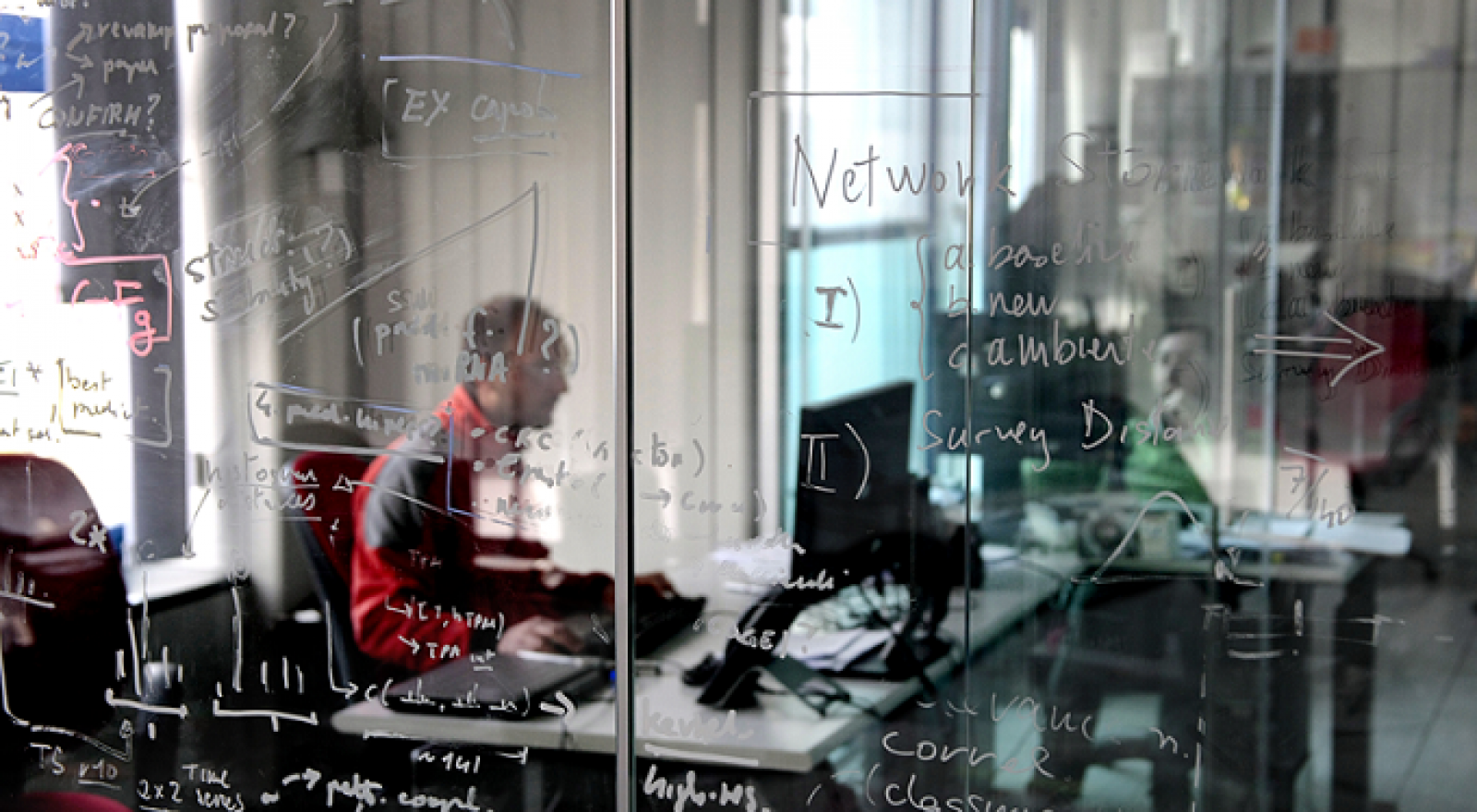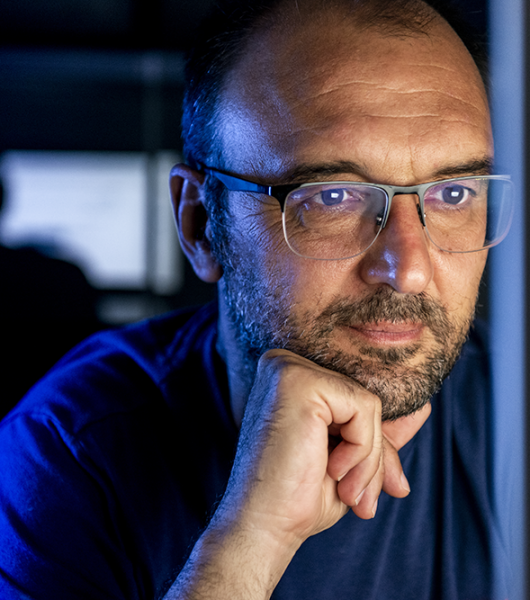Bill Gates quotes an FBK study at WEF 2017
For his speech at the World Economic Forum, Bill Gates used data from a study on the Ebola virus conducted by researchers at FBK of Trento in collaboration with Northeastern University in Boston, Doctors with Africa CUAMM, Florida University and the Fred Hutchinson Cancer Research Center in Seattle.
The presentation by Bill Gates took place during the WEF in Davos on the CEPI (Coalition for Epidemic Preparedness Innovations) initiatives, an alliance of which the Bill & Melinda Gates Foundation is partner,and whose aim is to fund and coordinate the development of new vaccines as well as to contain the spread of epidemics. Gates cited data compiled by the international study “Containing Ebola at the Source with Ring Vaccination” (Published last November on the specialized journal “PLOS Neglected Tropical Diseases”), to which Fondazione Bruno Kessler contributed, dedicated to the most effective way to contain future outbreaks of Ebola also when relatively few doses of vaccine are available.
A representation of the data-driven simulation is available at https://mosaicscience.com/story/outpacing-pandemics
“The Bill & Melinda Gates Foundation,” says Stefano Merler, an FBK researcher who participated in the study, “invests heavily in the development of vaccines to prevent the spread of infectious diseases. Given our numerous publications on the epidemic of Ebola in 2014 and 2015, we were asked to provide guidance on what could have been the impact of the vaccine against Ebola, had it been available at the time the epidemic broke out.”
“Developing new and more effective vaccines” Merler continues, ” is a priority in fighting infectious diseases. Developing effective strategies for vaccine distribution is equally important, especially in the case of limited resources. Our studies on the Ebola vaccine meet the need to optimize the distribution of the vaccine, of which a stockpile of about 300,000 doses is expected, to contain possible future outbreaks. ”
The discussion at the World Economic Forum highlights a further recognition for the research of Fondazione Bruno Kessler that, as part of the mathematical models of Ebola spread in West Africa, had been awarded the Aspen Prize in 2016 for cooperation and scientific research between Italy and the US for a paper published in the well-known journal Lancet Infectious Diseases.
“We are very proud of these results,” said Fondazione Bruno Kessler’s President Francesco Profumo, “that are the result of our policy of investing in research in the data sector, and of the collaborative work with other relevant international institutions. This research has highlighted the importance of interdisciplinarity, even in an area which until a few years ago was considered the area of expertise of epidemiologists only. Critical are, in particular, the modern techniques of Data Science on which FBK is working in collaboration also with MIT. ”
The research work “Containing Ebola at the Source with Ring Vaccination”
Among the authors of “Containing Ebola at the Source with Ring Vaccination” are Stefano Merler, Marco Ajelli, Laura Fumanelli and Stefano Parlamento from Fondazione Bruno Kessler, Ana Pastor y Piontti and Alessandro Vespignani from Northeastern University in Boston, John Putoto and Dante Carraro, from Doctors with Africa CUAMM, Natalie Dean and Ira Longini of Florida University, and Elizabeth Halloran of the Fred Hutchinson Cancer Research Center in Seattle.
“The availability of an effective vaccine against Ebola,” says Stefano Merler, “has greatly increased the hope of avoiding devastating epidemics like the one of 2014-15 in West Africa. Unfortunately, it is not possible to vaccinate the entire population potentially exposed to the risk in Africa in advance as it is routinely done with childhood diseases. As stated in the purchase plan of the GAVI agency – the vaccine Alliance, the available vaccine doses will be only about 300,000. So we asked ourselves the question of how to use the vaccine available to contain a future epidemic of Ebola, and we have shown that vaccinating contacts of cases of Ebola, for example family cases, and extending vaccination also to contacts of contacts, could contain future outbreaks with transmissibility similar to that observed in West Africa. The number of doses required may be about 3,000, well below the programmed stockpile. In the event of greater transmissibility, additional measures should be considered, such as extending the vaccination on a space base, which requires a substantially higher number of vaccines, or adopting non-drug strategies. ”
As for this research, thanks to epidemiologists from Doctors with Africa CUAMM, it was possible to reconstruct the chain of Ebola transmission in the Pujehun District, in Sierra Leone. This allowed us to obtain reliable estimates of all fundamental parameters involved in the transmission of Ebola, such as the incubation period, infectivity period, transmissibility, risk factors. The information enabled the simulation of the spread of Ebola in time and space in a future epidemic and the evaluation of the effects of the vaccine. “All this”, continues Merler, “is an incredible improvement over just a few years ago, when the impact of the introduction of a vaccine was evaluated by conceptually very simple theoretical models and based on poor field data.”


